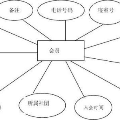深入了解 ES6 强大的 ... 运算符
(给前端大全加星标,提升前端技能)
作者:皮小蛋
https://segmentfault.com/a/1190000020612737
... 运算符,是
ES6
里一个新引入的运算法,也叫
展开/收集
运算符,我们每天都要和它打交道。
Spread syntax allows an iterable , such as an array expression or string , to be expanded in places where 0 or more arguments or elements are expected or an object expression to be expanded in places where 0 or more key-value pairs (for object literals) are expected.
基础用法
基础用法 1: 展开
const a = [2, 3, 4]
const b = [1, ...a, 5]
b; // [1, 2, 3, 4, 5]
基础用法 2: 收集
function foo(a, b, ...c) {
console.log(a, b, c)
}
foo(1, 2, 3, 4, 5); // 1, 2, [3, 4, 5]
function foo(...args) {
console.log(args)
}
foo(1, 2, 3, 4, 5); // [1, 2, 3, 4, 5]
“A function’s last parameter can be prefixed with ... which will cause all remaining (user supplied) arguments to be placed within a "standard" javascript array. Only the last parameter can be a rest parameter .”
Remember that the rest parameter must be the last parameter , or an error will occur.
基础用法 3: 把 类数组 转换为 数组

const nodeList = document.getElementsByClassName("test");
const array = [...nodeList];
console.log(nodeList); //Result: HTMLCollection [ div.test, div.test ]
console.log(array); //Result: Array [ div.test, div.test ]
// ES5 时代
function bar() {
var args = Array.prototype.slice.call(arguments);
// 调用push 加几个元素
args.push(1, 2, 3);
// 把args 作为参数传递给foo
foo.apply(null, args)
}
// ES6 时代
function foo(...args) { // 搜集参数到 args
args.push(4, 5, 6)
console.log(...args) // 展开args
}
bar(0); // 0 1 2 3 4 5 6
基础用法 4: 增加元素或属性
1: 为数组新增成员
const pokemon = ['KK', 'Peter'];
const charmander = '郑伊健';
const pokedex = [...pokemon, charmander];
console.log(pokedex);
//Result: [ 'KK', 'Peter', '郑伊健' ]
2: 为对象新增属性
const basicSquirtle = { name: 'Squirtle', type: 'Water' };
const fullSquirtle = {
...basicSquirtle,
species: 'Tiny Turtle',
evolution: 'Wartortle'
};
console.log(fullSquirtle);
//Result: { name: 'Squirtle', type: 'Water', species: 'Tiny Turtle', evolution: 'Wartortle' }
基础用法 5:
合并数组/对象
合并数组:
const pokemon = ['Squirtle', 'Bulbasur', 'Charmander'];
const morePokemon = ['Totodile', 'Chikorita', 'Cyndaquil'];
const pokedex = [...pokemon, ...morePokemon];
console.log(pokedex);
//Result: [ 'Squirtle', 'Bulbasur', 'Charmander', 'Totodile', 'Chikorita', 'Cyndaquil' ]
// 对象数组也一样:
const pokemon = [
{ name: 'Squirtle', type: 'Water' },
{ name: 'Bulbasur', type: 'Plant' }
];
const morePokemon = [{ name: 'Charmander', type: 'Fire' }];
const pokedex = [...pokemon, ...morePokemon];
console.log(pokedex);
//Result: [ { name: 'Squirtle', type: 'Water' }, { name: 'Bulbasur', type: 'Plant' }, { name: 'Charmander', type: 'Fire' } ]
const baseSquirtle = {
name: 'Squirtle',
type: 'Water'
};
const squirtleDetails = {
species: 'Tiny Turtle Pokemon',
evolution: 'Wartortle'
};
const squirtle = { ...baseSquirtle, ...squirtleDetails };
console.log(squirtle);
//Result: { name: 'Squirtle', type: 'Water', species: 'Tiny Turtle Pokemon', evolution: 'Wartortle' }
1. 复制具有嵌套结构的数据/对象
const pokemon = {
name: 'Squirtle',
type: 'Water',
abilities: ['Torrent', 'Rain Dish']
};
const squirtleClone = { ...pokemon };
pokemon.name = 'Charmander';
pokemon.abilities.push('Surf');
console.log(squirtleClone);
//Result: { name: 'Squirtle', type: 'Water', abilities: [ 'Torrent', 'Rain Dish', 'Surf' ] }
1、复制引用类型的数据
const pokemon = {
name: 'Squirtle',
type: 'Water',
abilities: ['Torrent', 'Rain Dish']
};
const squirtleClone = { ...pokemon, abilities: [...pokemon.abilities] };
pokemon.name = 'Charmander';
pokemon.abilities.push('Surf');
console.log(squirtleClone);
//Result: { name: 'Squirtle', type: 'Water', abilities: [ 'Torrent', 'Rain Dish' ] }
2、深克隆
2. 增加条件属性
const pokemon = {
name: 'Squirtle',
type: 'Water'
};
const abilities = ['Torrent', 'Rain dish'];
const fullPokemon = abilities ? { ...pokemon, abilities } : pokemon;
console.log(fullPokemon);
3. 短路
const pokemon = {
name: 'Squirtle',
type: 'Water'
};
const abilities = ['Torrent', 'Rain dish'];
const fullPokemon = {
...pokemon,
...(abilities && { abilities })
};
console.log(fullPokemon);
const fullPokemon = {
...pokemon,
...{ abilities }
}
4. 默认结构和添加默认属性
默认结构:
const pokemon = {
id: 1,
name: 'Squirtle'
};
const { type, name } = pokemon;
console.log(name); //Result: Squirtle
console.log(type); //Result: undefined
//Assigning default value to the type variable
const { type = 'Water', name } = pokemon;
console.log(type); //Result: Water
添加默认属性
const pokemon = {
name: 'Squirtle',
type: 'Water'
};
// 给abilities默认赋值
const { abilities = [], ...rest } = pokemon;
const fullSquirtle = { ...rest, abilities };
console.log(rest); //Result: { name: 'Squirtle', type: 'Water' }
console.log({ fullSquirtle }); //Result: { name: 'Squirtle', type: 'Water', abilities: [] }
这里就是通过展开
rest
, 合并
abilities
得到完全体的数据。
const pokemon = [
{
name: 'Charmander',
type: 'Fire'
},
{ name: 'Squirtle', type: 'Water', abilities: ['Torrent', 'Rain Dish'] },
{
name: 'Bulbasur',
type: 'Plant'
}
];
function setDefaultAbilities(object) {
const { abilities = [], ...rest } = object;
return { ...rest, abilities };
}
// Applying the setDefaultAbilities function to all the pokemon in the array:
const normalizedPokemon = pokemon.map(pokemon => setDefaultAbilities(pokemon));
console.log(normalizedPokemon);
//Result: [ { name: 'Charmander', type: 'Fire', abilities: [] }, { name: 'Squirtle', type: 'Water', abilities: [ 'Torrent', 'Rain Dish' ] }, { name: 'Bulbasur', type: 'Plant', abilities: [] } ]
这样迭代一遍,所有的对象就都具备
abilities
属性了。
推荐阅读
(点击标题可跳转阅读)
觉得本文对你有帮助?请分享给更多人
关注「前端大全」加星标,提升前端技能
好文章,我在看❤️
登录查看更多






